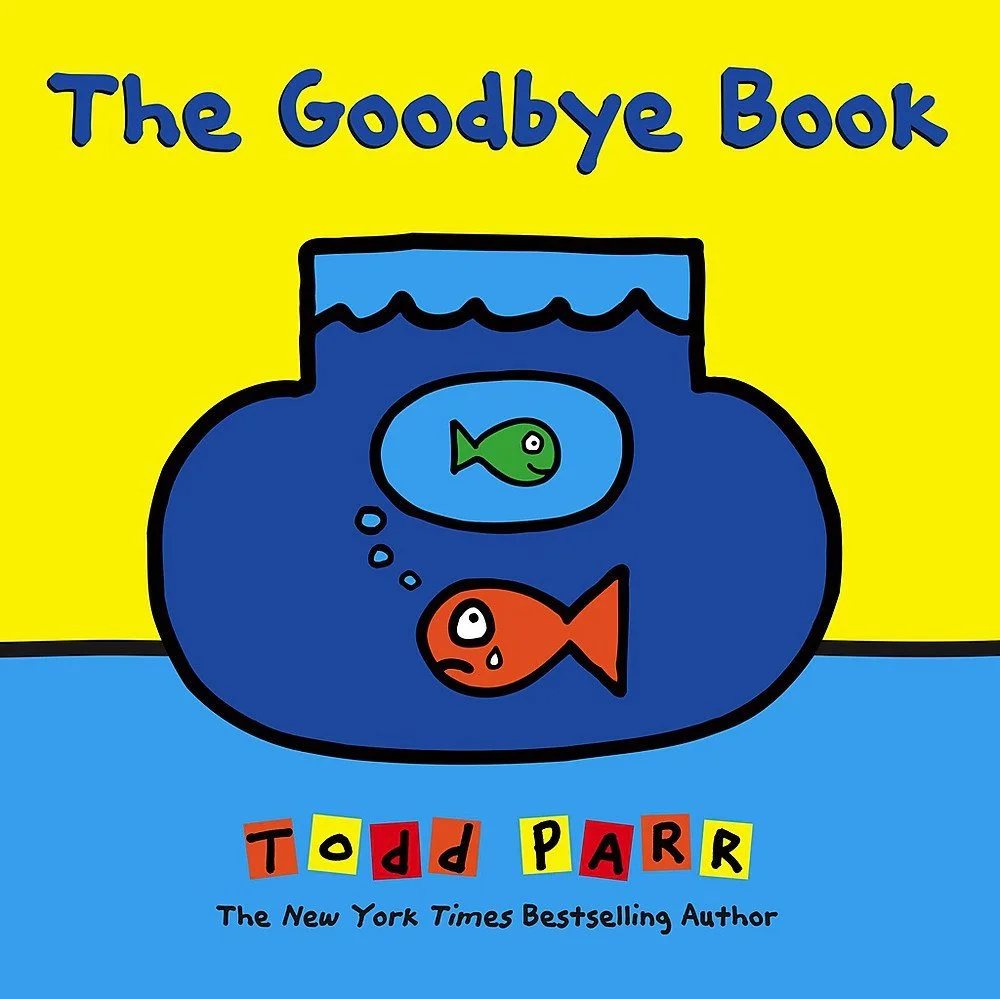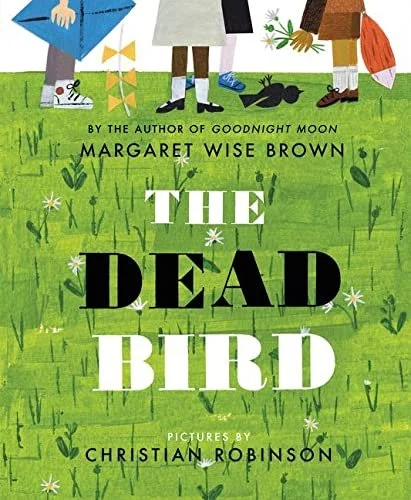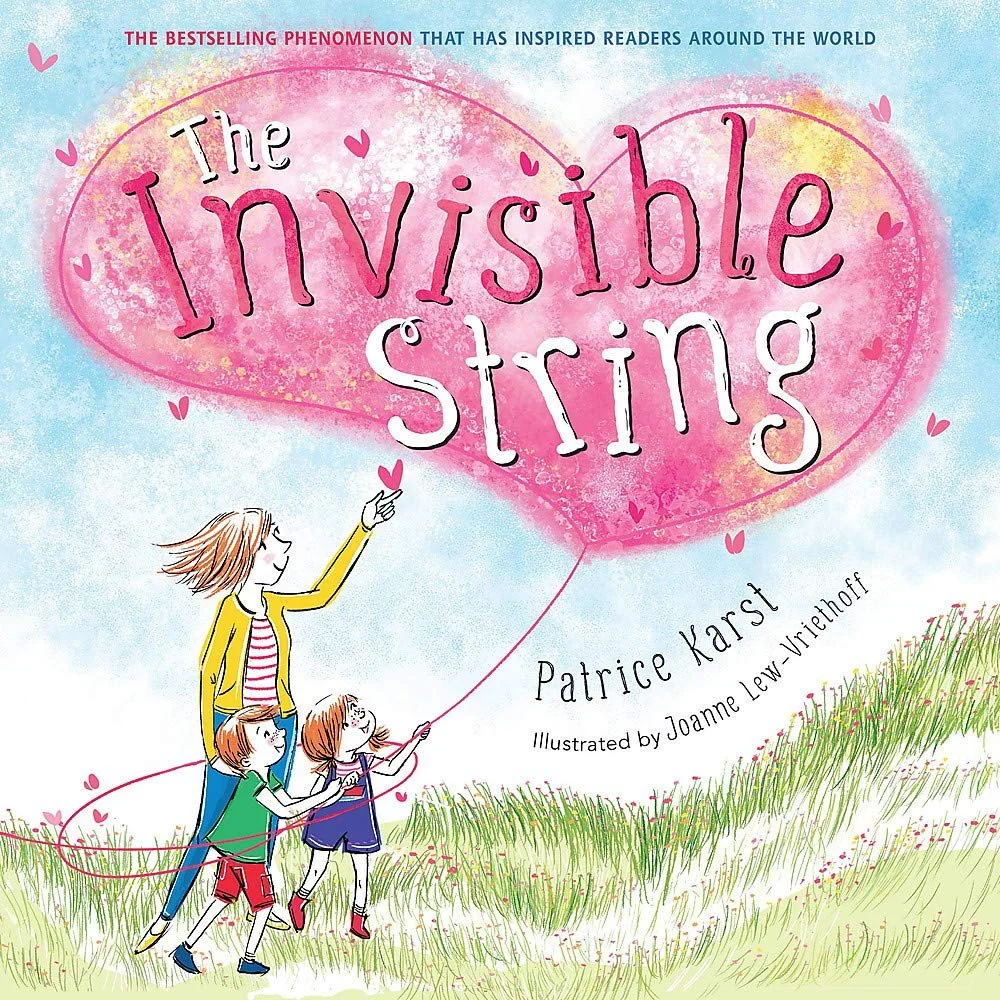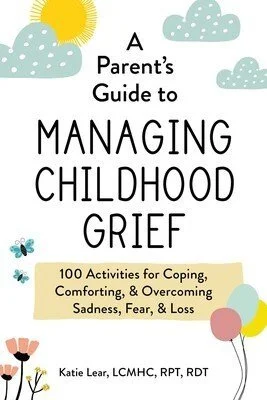Preschoolers and kindergarteners are just beginning to understand the basics of what it means when a living thing dies. This makes it challenging to talk about grief and loss with little kids: even though it’s important to do, it can be hard to figure out where to begin. Picture books take these big subjects and break them down into smaller, more manageable pieces. That’s why several of the exercises for younger children in my grief activity book begin with reading a story together.
Picture books are an opportunity for you to sit down with your child and provide some much-needed one-on-one support after a loss. Stories help kids to approach grief in a gentle way, and helps kids to express their fears and feelings without having to speak directly about their own grief. Perhaps most importantly, stories reassure children that the feelings of grief are universal. Picture books take all the big, overwhelming feelings that come after loss and make them just a little bit easier to understand.
Let’s take a look at 10 picture books that can help your young child learn about grief, death, and loss. We’ll focus on stories geared toward children from preschool and kindergarten through the early elementary years.
What to Look for in a Picture Book for Kids About Grief
As a children’s therapist, I am always on the lookout for good books for my play therapy office. Something that’s important to me is that books about tough subjects don’t feel too “therapy-ish.” Really good stories for children don’t feel like after school specials or counseling in disguise, even when the topic is heavy.
Good storytelling—likable characters, strong writing, and beautiful illustrations—hold a child’s interest and help them connect emotionally with what they’re learning. I think even little children can sense the difference between a book focused on storytelling and a book that isn’t.
You may also want to pay attention to how stories describe what happens after someone dies. Some books include religious beliefs, while others don’t. None of the books on this list follow any particular belief system, so they should work for most families. Still, it’s worth paging through your picture books in advance to make sure there aren’t any messages that could be confusing to your child. Some books may use phrases like “went away” or “went to sleep” to describe death, and this kind of abstract language can be hard for young children to grasp.
A Grief Book for the Youngest Children: The Goodbye Book, by Todd Parr
Recommended age range: 3 and up
Preschoolers and kindergarteners may already be familiar with Todd Parr’s popular book series. The bright style of his illustrations is easy to recognize. The Goodbye Book is short and sweet, with basic vocabulary and only one sentence per page, making it ideal for very young readers. The language is simple, but the ideas are pretty grown-up.
Each page describes a different feeling or symptom a person may experience after a loved one dies, such as pretending the death never happened or not wanting to do fun things anymore. Young children will get reassurance that all these grief responses are normal and okay, and that they become easier to manage as time passes. The book never specifically mentions death, only goodbyes.
A Simple Story About Death: The Dead Bird, By Margaret Wise Brown
Recommended age range: 4 and up
Many children’s first encounter with death will be the death of an animal. Whether it’s a pet or simply an animal found outdoors, talking about nature and animal deaths can be a good introduction to conversations about grief and loss. The Dead Bird doesn’t go out of its way to teach young readers specifics about grief or death. It’s just a story about preschool children who discover a dead bird while outside, and hold a funeral for it.
If you’ve ever been in a similar situation with your preschooler, you might have been surprised by the seemingly morbid curiosity little kids can display when they find a dead animal. It may seem weird to adults, but it’s totally natural for children to wonder about what physically happens when a living thing dies. Similarly, this story has some descriptions of death that might seem jarring at first: it describes how the bird’s body starts off as warm, and then becomes cool and stiff. Learning this kind of information can help children begin to differentiate between living and dead, and understand that death is permanent.
This is a classic, older book that’s been updated with new illustrations showing a diverse group of kids. It’s a good option for a first conversation about death, or to help children better understand funerals and mourning.
A Children’s Book About the Death of a Grandparent: Nana Upstairs & Nana Downstairs, by Tomie dePaola
Recommended age range: 3 and up
The death of a grandparent or great-grandparent is another common way children are introduced to grief and loss. This story for young children touches on themes of aging, dementia, and the special relationship that little children and their older relatives can share. Like The Dead Bird, this book focuses more on telling a story than teaching specific concepts about death or grief. It’s an entertaining story for children in its own right that could also lead to some helpful discussions about what happens as grandparents and other loved ones grow old.
This true story, based on author Tomie dePaola’s childhood, explores the relationship between a little boy, his grandmother, and his great-grandmother, who live together in a nearby house. It gently refers to death as a part of life, and something that happens to everyone. While dementia or Alzheimer’s aren’t specifically mentioned, talking about great-grandmother’s behavior in the story might be a helpful jumping-off point for conversations about these illnesses in real life.
An Informational Book for Preschoolers and Kindergarteners: I Miss You, by Pat Thomas
Recommended age range: 4 and up
If someone in your family or circle of friends has recently died, you may need to speak a little more directly about death with your young child. The death of a loved one can bring up a lot of questions and curiosity for preschoolers and kindergarteners. Children may wonder what happens to the body when someone dies, why people die, or what happens at a funeral. It’s also common for young children to worry that they might have done something to cause their loved one’s death, or to believe that death is a punishment for being bad.
I Miss You: A First Look at Death answers these questions in a way that’s detailed but easy to understand. It’s aimed at a similar age group as The Goodbye Book, listed above, but it’s a longer and more complex read. In addition to answering common questions and dispelling misconceptions a child might have about death, it normalizes many of the complicated feelings a grieving child might have, such as guilt, regret, and anger. It also reviews a few simple beliefs different cultures have about what happens after death. There is a lot here for kids to think about and revisit over time.
Staying Connected Through Love: The Invisible String, by Patrice Karst
Recommended age range: 4 and up
Of all the books in this list, this is the one that feels the most “therapy-ish” to me. It’s a very simple, straightforward book without a lot of story to it. However, the idea of the invisible string is easy for children to understand: it’s a metaphor for the love that connects family, friends, and other special people. This image can be a big comfort when a loved one dies, leaves, or moves far away.
The book briefly mentions death and heaven, but isn’t solely focused on grief. Instead, it talks about how the bond between two people remains no matter where they are, how they’re feeling, or what they’re doing. The book points out that love doesn’t go away even when a person is angry, which can be a really important message for grieving children to hear.
Children (and adults) have to find ways to continue to love and remember the person who has died as part of the grieving process. This book can be a great opener to having conversations with very young kids about how they can continue to maintain a connection to their loved one.
A Book for Caregivers: A Parent’s Guide to Managing Childhood Grief
Caregivers need support navigating the grieving process, too. If you’re the parent of a young child who is grieving a loss, My new book, A Parent’s Guide to Managing Childhood Grief, can help you move on to deeper conversations after reading picture books like these.
The book combines guidance and grief education with hands-on activities you and your child can work on together. You’ll find ways to learn about grief and loss, express feelings, and strengthen your parent-child bond.
It’s available for on Amazon, at Barnes & Noble, and at your local independent bookstore.







